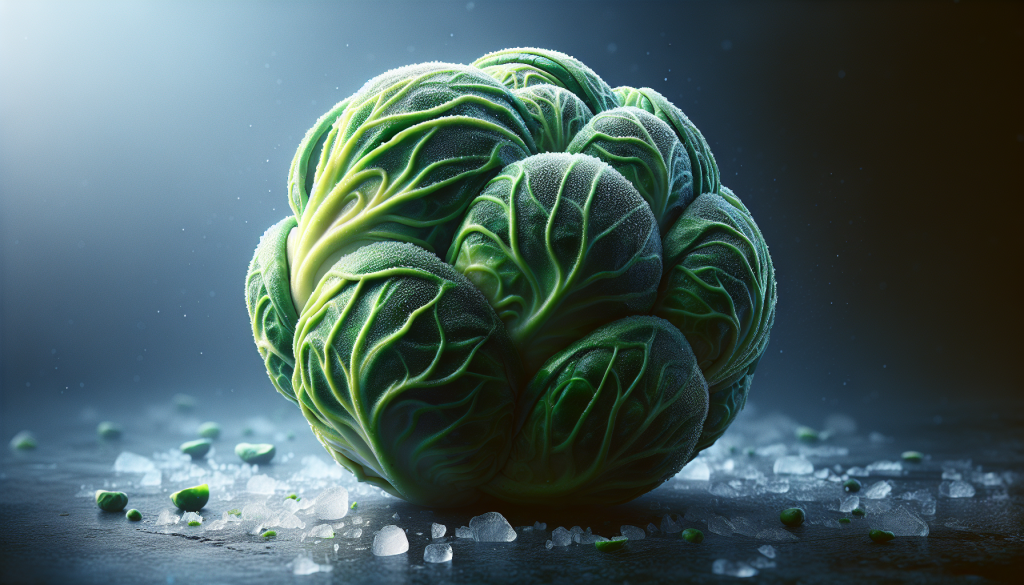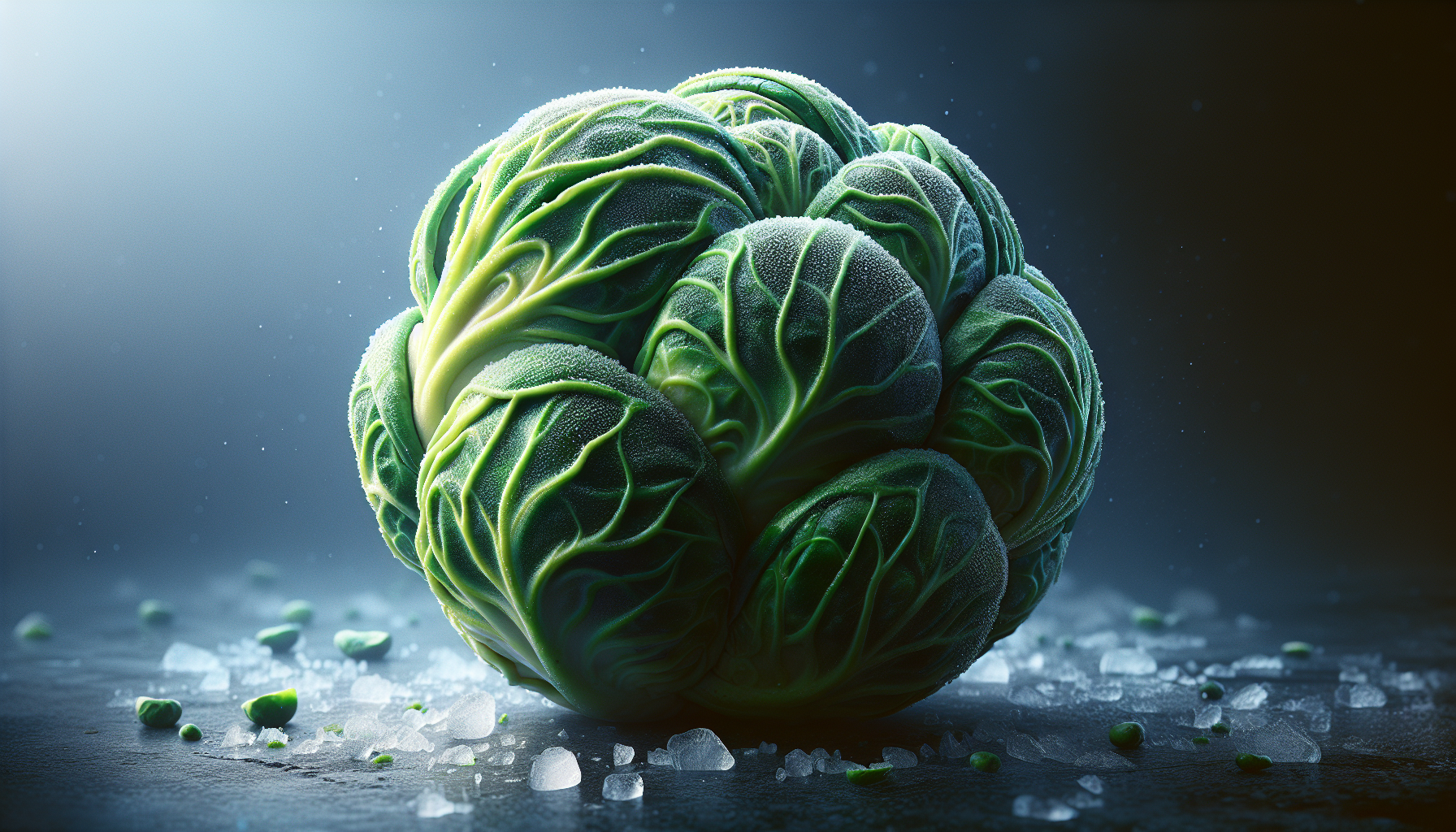If you’ve ever been left with a surplus of brussels sprouts after a bountiful harvest or a great sale at the grocery store, you may find yourself wondering how to make them last longer. Luckily, freezing brussels sprouts is a simple and effective method to preserve their fresh flavor and nutritional value. In this article, we’ll guide you through the steps of freezing brussels sprouts, ensuring that you can enjoy them throughout the year and minimize food waste. So grab your apron and let’s get started on this freezing adventure!
Choosing and Preparing Brussels Sprouts
Selecting fresh Brussels sprouts
When choosing Brussels sprouts, look for firm, compact sprouts with vibrant green leaves. Avoid sprouts that have spotted or yellowing leaves, as this may indicate age or spoilage. The sprouts should be evenly sized to ensure even cooking. Additionally, choose sprouts that feel heavy for their size, as this indicates freshness.
Trimming and cleaning the sprouts
Before blanching and freezing Brussels sprouts, it is important to trim and clean them properly. Start by removing any loose or damaged outer leaves. Trim the stem end of each sprout and make a shallow “X” incision on the base. This helps to evenly cook the sprouts and prevent them from becoming mushy. Rinse the sprouts thoroughly under cold running water to remove any dirt or debris.
Blanching Brussels Sprouts
Preparing boiling water
Blanching is a crucial step in freezing Brussels sprouts as it helps retain their color, texture, and nutritional value. Fill a large pot with water, ensuring that there is enough to fully submerge the sprouts. Add a teaspoon of salt to the water and bring it to a rolling boil.
Blanching the Brussels sprouts
Once the water is boiling, carefully add the trimmed and cleaned Brussels sprouts to the pot. Allow them to blanch for 3-5 minutes, depending on their size. Larger sprouts may require a slightly longer blanching time. Blanching softens the sprouts slightly and helps to preserve their flavor and texture.
Cooling the sprouts
After the sprouts have been blanched, drain them immediately and transfer them to a bowl of ice water. This stops the cooking process and helps maintain the vibrant green color of the sprouts. Allow the sprouts to cool completely in the ice water for about 5 minutes before draining them again.
Packaging Brussels Sprouts
Choosing appropriate containers
To freeze Brussels sprouts properly, it is important to choose the right containers. Opt for freezer-safe containers with airtight seals to prevent freezer burn and maintain the quality of the sprouts. Alternatively, use freezer bags that are specifically designed for long-term food storage.
Using freezer bags or airtight containers
If using freezer bags, ensure they are labeled as “freezer safe” to prevent any potential damage. For airtight containers, make sure they are clean and dry before adding the sprouts. It is recommended to use portion-sized containers or bags, allowing for convenient meal planning and easy access to the desired quantity of sprouts.
Labeling the packages
When packaging Brussels sprouts, it is essential to label the containers or bags with the date of freezing. This helps to keep track of the sprouts’ freshness and ensures they are used within the recommended time frame. Additionally, you may include a brief description of the contents for easy identification later.

Freezing Brussels Sprouts
Filling the containers
Once the blanched Brussels sprouts have been properly packaged, fill the containers or bags with the sprouts. Leave some headspace in the containers or bags to allow for expansion during freezing. Avoid overpacking the containers, as this may affect the quality of the sprouts.
Removing excess air
Before sealing the containers or bags, remove as much excess air as possible. This helps to prevent freezer burn and maintain the flavor and texture of the sprouts. For bags, gently press out the air and seal tightly. With containers, make sure the lids are securely fastened to create an airtight seal.
Sealing the packages
Ensure that the packages are tightly sealed to prevent any air or moisture from entering. For containers, double-check the lids and ensure they are securely closed. For bags, make sure the seal is tight and well-sealed. Properly sealed packages are essential for maintaining the taste and quality of the frozen Brussels sprouts.
Storing Brussels Sprouts in the Freezer
Optimal freezer temperature
To ensure maximum freshness and longevity, store the packaged Brussels sprouts in a freezer set to 0 degrees Fahrenheit (-18 degrees Celsius). Freezing at this temperature helps to preserve the flavor, texture, and nutrients of the sprouts.
Organizing the freezer space
When storing Brussels sprouts, it is essential to keep them separate from other items in the freezer. Place the packages in a single layer on a flat surface to freeze them initially. Once frozen, stack the packages neatly to optimize space. This organization helps to maintain the sprouts’ quality and makes it easier to find and access them when needed.
Thawing Brussels Sprouts
Choosing a thawing method
When you’re ready to enjoy your frozen Brussels sprouts, it’s important to choose the right thawing method. The two recommended methods are thawing in the refrigerator or using cold water.
Thawing in the refrigerator
To thaw Brussels sprouts in the refrigerator, transfer the desired quantity of frozen sprouts from the freezer to a plate or container. Place them in the refrigerator and allow them to thaw slowly and safely overnight. This method preserves the sprouts’ texture and flavor while minimizing the risk of bacterial growth.
Thawing under cold water
If you need to thaw Brussels sprouts more quickly, you can use the cold water method. Place the frozen sprouts in a leak-proof plastic bag and submerge them in a large bowl of cold water. Change the water every 30 minutes to maintain a cold temperature. This method can thaw the sprouts within 1-2 hours, but it is important to cook them immediately afterward.
Cooking with Frozen Brussels Sprouts
Roasting frozen Brussels sprouts
Roasting is a popular and delicious way to cook frozen Brussels sprouts. Preheat your oven to 425 degrees Fahrenheit (220 degrees Celsius) and spread the frozen sprouts on a baking sheet. Drizzle them with olive oil, season with salt and pepper, and toss to coat evenly. Roast the sprouts for approximately 25-30 minutes, tossing them halfway through, until they are golden and tender.
Steaming frozen Brussels sprouts
Steaming is another excellent method to cook frozen Brussels sprouts. Fill a steamer pot with water and bring it to a boil. Place the frozen sprouts in the steamer basket and steam them for about 6-8 minutes until they are tender but still retain some firmness. Serve them as a side dish or incorporate them into your favorite recipes.
Boiling frozen Brussels sprouts
Boiling is a quick and easy method to cook frozen Brussels sprouts. Bring a pot of salted water to a boil and add the frozen sprouts. Cook them for approximately 6-8 minutes until they are tender. Drain the sprouts and serve them as desired, whether as a standalone side dish or added to other recipes.
Using Frozen Brussels Sprouts in Recipes
Incorporating into stir-fries
Frozen Brussels sprouts can be a convenient addition to stir-fries. Simply thaw and drain the sprouts before adding them to a hot skillet or wok with other vegetables, protein, and seasonings. Stir-fry until the sprouts are heated through and serve them as part of a tasty and nutritious meal.
Adding to soups and stews
For a hearty and flavorful dish, add frozen Brussels sprouts to soups and stews. Thaw the sprouts before adding them to the simmering pot. The sprouts will contribute texture and taste to the overall dish, enhancing the flavors with their distinct Brussels sprouts’ essence.
Using in pasta dishes
Frozen Brussels sprouts can also elevate your pasta dishes. After thawing and draining the sprouts, sauté them with garlic and olive oil. Toss them into cooked pasta along with your favorite sauce, cheese, and other desired ingredients. The sprouts will add a delicious bite to your pasta creation.
Guidelines for Quality and Shelf Life
Checking for freezer burn
When using frozen Brussels sprouts, it is important to check if they have any signs of freezer burn. Freezer burn occurs when air comes into contact with the sprouts, causing moisture loss and potentially affecting their taste and texture. Look for discoloration, ice crystals, or dry patches on the sprouts. If freezer burn is present, it is best to discard the affected sprouts.
Assessing quality after thawing
After thawing the Brussels sprouts, assess their quality before using them in recipes. The sprouts should have a vibrant green color, firm texture, and a fresh aroma. If the sprouts appear dull, mushy, or have an off smell, it is advisable to discard them and avoid consuming them.
Shelf life of frozen Brussels sprouts
When properly stored in the freezer, Brussels sprouts can maintain their quality for up to 12 months. However, for optimal taste and texture, it is recommended to consume them within 6 months. Always check for signs of spoilage before using frozen Brussels sprouts for the best culinary experience.
Serving Suggestions for Brussels Sprouts
Pairing with other ingredients
Brussels sprouts pair well with a variety of ingredients, adding depth and flavor to any dish. Combine them with bacon or pancetta for a savory twist, or complement their earthy taste with roasted nuts such as almonds or pecans. Experiment with different combinations to discover your favorite flavor profiles.
Enhancing flavors with seasonings
Seasonings play a crucial role in enhancing the flavors of Brussels sprouts. Common choices include garlic, lemon juice, balsamic vinegar, and herbs like rosemary or thyme. Experiment with different combinations to find the perfect balance of flavors that suits your taste preferences.
By following these guidelines for selecting, preparing, freezing, and cooking Brussels sprouts, you can enjoy their deliciousness long after their peak season. Whether as a standalone side dish, a hearty addition to recipes, or a flavorful complement, frozen Brussels sprouts offer versatility and convenience in the kitchen. So go ahead, stock up on these nutritious delights, and savor them year-round!

